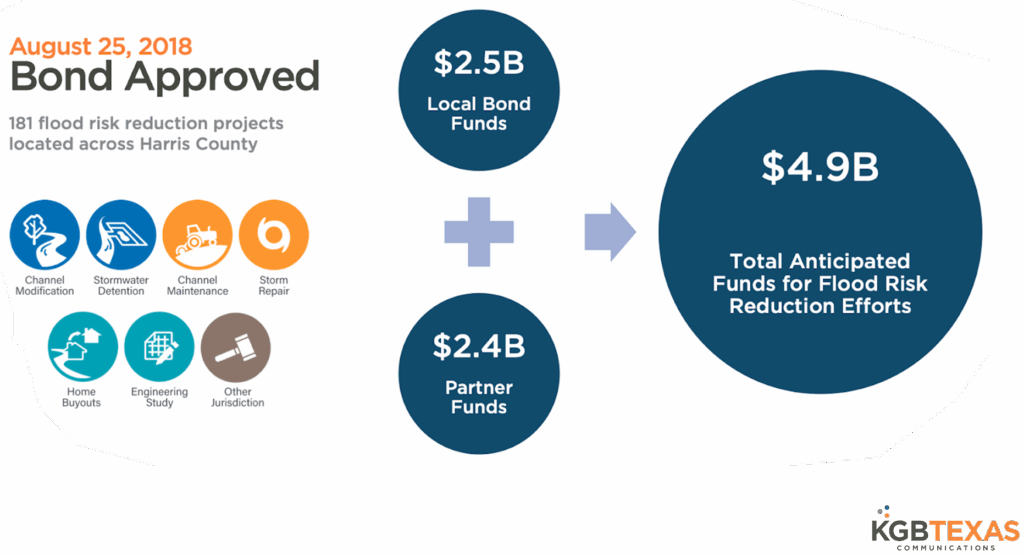Harris County Flood Control District: Open and Transparent Community Engagement

How Harris County facilitated an open and transparent process of community engagement
Harris County, Texas is the third largest county in the United States and the largest in Texas. It is home to 4.73M people, including the 2.3M residents of Houston, its county seat. Harris County is unique among all counties in the nation for having an unincorporated area population of more than 2M residents.
The Harris County Flood Control District is responsible for building flood damage reduction projects across the county and includes the oversight of all major watersheds and channels.

The situation: A new approach to community engagement
Harris County Flood Control District gets public support in the millions of dollars for rebuilding and increasing flood control after Hurrican Harvey. But with that budget comes a community engagement mandate. Harris County FCD needed to make sure they could have inclusive, representiative community engagement in a time of social distancing.


Taking action: Increasing certainty of public participation with virtual town halls
With over 4.7 million residents and 145 languages spoken, the daunting task of open, accessible public engagement was made all the more complicated in the midst of COVID-19. To solve some of the transparency and accessibility challenges, the District and its consultant, KGB Texas Communications, leveraged PublicInput’s public meetings platform to “go virtual.”
Harris County and the KGB Texas team used the PublicInput platform to:
- Broadcast their Zoom conference publicly on the web
- Provide a toll-free line with a managed speaker queue
- Manage meeting registration
- Collect public comment via phone, email, and online
- Transcribe voice comments and create reports on all public comment
- Publish multi-lingual meeting transcripts
Virtual community engagement with online town halls allowed for increased accessibility in a time of social distancing.
The level of engagement has skyrocketed. When COVID-19 hit, we were concerned our conversations with the public would stagnate. Instead, the Flood Control District is talking to an increasing number of people in each meeting. – Emily Woodell, KGBTexas
The result: Record-breaking community engagement and a repeatable process
By March 2021, the District had seen a three-fold increase in meeting attendance along with higher rates of input received from the community.
The feedback from the community has been incredibly positive and residents have noted that the platform is incredibly accessible and very easy to use. We focus a lot on equity and access, so the fact that the platform offers options for residents to dial-in or join online was critical. – Emily Woodell, Consultant
A year later, the District has continued to see expanded engagement through the use of multi-modal outreach and tactics that include, virtual public meetings, social media, email, online surveys, and map-based commenting.









